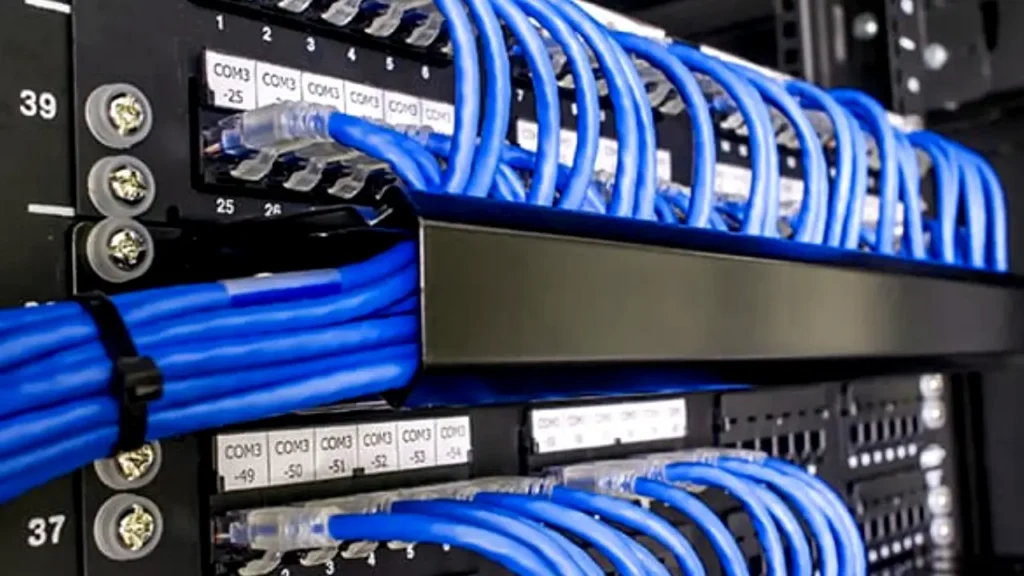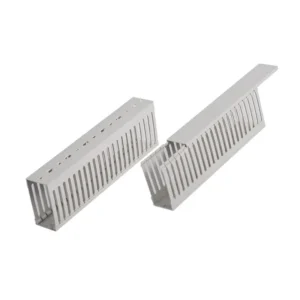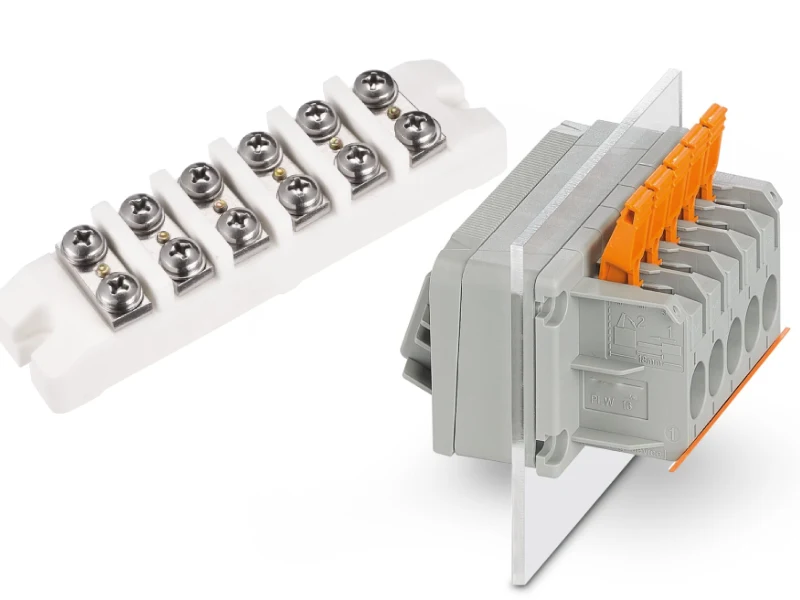In today’s interconnected world, a robust and reliable network is the backbone of any successful operation. Yet, often overlooked is a critical component that underpins this reliability: effective network cable management. Without it, even the most advanced hardware can suffer from performance issues, leading to frustrating downtime and significant operational inefficiencies.
This ultimate guide will delve into the world of network cable management, providing you with the knowledge and strategies to transform your chaotic cables into an organized, high-performing network infrastructure. From understanding the core principles to implementing best practices and utilizing the right tools, we’ll equip you to build a system that enhances efficiency and ensures long-term reliability.
What is Network Cable Management?
Recommended Cable Management
Network cable management is the systematic process of organizing, routing, protecting, and identifying network cables within an IT infrastructure, such as data centers, server rooms, or office environments.
Its primary goal is to ensure efficient network operation by optimizing airflow for cooling, minimizing signal interference, simplifying maintenance and troubleshooting, and enhancing overall safety and aesthetics. This involves utilizing various tools and techniques like cable trays, ties, labels, and strategic pathways to maintain an organized and scalable cabling system.
Why Network Cable Management Matters?
Effective network cable management is paramount for any modern IT infrastructure, significantly impacting operational efficiency and long-term reliability. Beyond mere aesthetics, it directly contributes to system performance and cost savings.
Here’s why network cable management matters:
- Improved Airflow and Cooling: Proper routing prevents cable tangles that can block airflow, ensuring efficient cooling of active equipment and extending hardware lifespan.
- Enhanced Performance and Reliability: Organized cables reduce electromagnetic interference (EMI) and signal degradation, leading to more stable network connections and fewer errors.
- Simplified Troubleshooting and Maintenance: Clearly labeled and neatly routed cables make it significantly faster to identify issues, perform upgrades, or reconfigure connections, minimizing downtime.
- Increased Scalability and Flexibility: A well-managed system allows for easy addition, removal, or modification of cables and equipment without disrupting the entire infrastructure, supporting future growth.
- Reduced Risk of Damage and Safety Hazards: Organized cables prevent accidental disconnections, physical damage from stress or kinks, and eliminate tripping hazards, creating a safer work environment.
- Cost Savings: By extending equipment life, reducing troubleshooting time, and simplifying upgrades, effective cable management ultimately leads to substantial long-term operational cost savings.
Cable Management Types

Effective cable management involves utilizing specific types of organizers to maintain order and efficiency within your network infrastructure. Understanding the function of each type allows for a more strategic and robust cabling solution.
Horizontal Cable Management
Horizontal cable management focuses on organizing and routing cables across the front or rear of a server rack or cabinet. These units are typically installed directly above or below network switches, patch panels, or other active equipment, making them ideal for managing short patch cords that connect adjacent devices.
They come in various forms, including panels with D-rings, brush strips, or lacing bars, all designed to guide cables neatly and maintain a clean appearance, while also protecting connections.
Vertical Cable Management
Vertical cable management is designed for routing and organizing larger bundles of cables up and down the sides of a server rack or cabinet. These organizers typically run the full height of the rack and are crucial for managing cables that span multiple pieces of equipment or connect to devices outside the immediate rack.
They often feature large capacity channels, fingers, or spools to support cables, protect bend radius, and ensure easy accessibility for future additions, moves, or changes within the network infrastructure.
Essential Tools and Accessories for Effective Cable Management
Effective cable management relies on using the right tools and accessories to achieve a clean, organized, and functional network infrastructure. These components aid in routing, securing, identifying, and protecting your cables.
- Cable Ties and Velcro Straps
- Cable Trays and Ladders
- Vertical and Horizontal Cable Managers
- Labeling Systems and Cable Markers
- Patch Panels and Cable Routers
- Bend Radius Protectors
Cable Ties and Velcro Straps
These are fundamental for bundling cables together. While plastic cable ties offer a secure, permanent hold, Velcro straps are generally preferred for network environments because they allow for easy adjustments, additions, and removals of cables without the need for cutting and re-tying, thus reducing potential cable damage.
Cable Trays and Ladders
Cable trays and ladders provide structured pathways for routing large volumes of cables across ceilings, under floors, or along walls. They support the weight of the cables, protect them from damage, and maintain proper airflow, making them essential for managing main runs and distribution in data centers and large networking closets.
Vertical and Horizontal Cable Managers
Installed within server racks and cabinets, these organizers keep patch cables and equipment cords neat and tidy. Vertical managers run along the sides of the rack to guide cables up and down, while horizontal managers are mounted between equipment to manage cables across the rack face, preventing clutter and improving airflow.
Labeling Systems and Cable Markers
Accurate and durable labeling is crucial for efficient troubleshooting and maintenance. Labeling systems, ranging from simple printable labels to specialized cable markers, allow technicians to quickly identify the source and destination of every cable, significantly reducing downtime during reconfigurations or issue resolution.
Patch Panels and Cable Routers
Patch panels serve as a centralized termination point for network cables, allowing for flexible connections between networking equipment. Cable routers, often integrated with patch panels or as separate units, help to direct and guide cables to specific ports, reducing stress on connectors and maintaining a clean front panel.
Bend Radius Protectors
These accessories are vital for safeguarding delicate fiber optic cables and high-performance copper cables. Bend radius protectors prevent cables from being bent beyond their minimum recommended radius, which can cause signal loss, performance degradation, or even permanent damage to the internal conductors.
Network Cable Management Best Practices

Implementing network cable management best practices is essential for creating a reliable, efficient, and scalable IT environment. These practices go beyond simply tidying cables, focusing on strategic planning and meticulous execution to optimize network performance and simplify future operations.
Plan Before You Pull
Effective cable management begins with thorough planning. Before laying a single cable, design your entire cabling infrastructure, considering current needs and future expansion. This includes mapping out pathways, identifying cable types and lengths, and anticipating equipment additions to avoid costly reworks later on.
Color-Code Your Cables
Utilize a consistent color-coding scheme for different cable types (e.g., data, voice, fiber, power) or for different network segments. This visual organization dramatically speeds up identification during troubleshooting, maintenance, or upgrades, reducing errors and improving operational efficiency across your network.
Label Everything Clearly
Every cable should be clearly labeled at both ends, indicating its source and destination. Use durable, legible labels that won’t fade or fall off. Comprehensive labeling, combined with accurate documentation, makes it incredibly easy to trace connections and minimize downtime during critical operations.
Maintain Proper Bend Radius
Always adhere to the manufacturer’s recommended bend radius for all cables, especially fiber optic and high-speed copper. Bending cables too tightly can cause signal degradation, performance issues, or even permanent damage, leading to costly replacements and network instability over time.
Separate Power and Data Cables
To prevent electromagnetic interference (EMI), always route power cables separately from data cables. Utilize distinct pathways, cable managers, or even different sides of the rack to maintain physical separation. This minimizes signal corruption and ensures reliable data transmission throughout your network.
Use Appropriate Cable Management Accessories
Invest in high-quality cable management accessories such as vertical and horizontal cable managers, D-rings, cable ties (preferably Velcro for flexibility), and cable trays. These tools help maintain organization, secure cables, protect them from damage, and ensure optimal airflow within your racks and cabinets.
Document Your Infrastructure
Maintain detailed and up-to-date documentation of your entire network cabling infrastructure. This includes floor plans, rack elevations, cable pathways, and a comprehensive list of all connections. Accurate documentation is invaluable for troubleshooting, planning upgrades, and training new personnel effectively.
Network Cable Management Tips
Implementing smart network cable management strategies is key to a high-performing and easily maintainable IT environment. These tips ensure your infrastructure remains organized, efficient, and scalable for years to come.
Here are some essential tips for network cable management:
- Plan Ahead: Always design your cable routes before installation, considering current needs and future expansion to avoid costly reworks.
- Color-Code Cables: Use different colored cables or labels for different purposes (e.g., data, power, fiber) to simplify identification.
- Label Everything: Clearly label both ends of every cable with its source and destination for quick troubleshooting and maintenance.
- Use Velcro Straps: Opt for Velcro straps over zip ties; they are reusable, less likely to damage cables, and allow for easier modifications.
- Separate Power and Data: Route power cables away from data cables to minimize electromagnetic interference (EMI) and ensure data integrity.
- Mind the Bend Radius: Always respect the minimum bend radius of cables, especially fiber optics, to prevent damage and signal degradation.
- Document Everything: Maintain detailed diagrams and records of your cabling infrastructure for efficient management and future reference.
- Choose Quality Accessories: Invest in durable cable management accessories like vertical/horizontal organizers and cable trays from reliable suppliers like Linkwell Electrics in Qingdao, Shandong, China.
- Keep it Clean: Regularly inspect and clean your cable pathways to prevent dust buildup and ensure optimal airflow.
Conclusion
In conclusion, effective network cable management is not merely about aesthetics; it’s a critical investment in your network’s performance, longevity, and security. By implementing the strategies outlined in this guide – from meticulous planning and strategic routing to consistent labeling and ongoing maintenance – you can transform a chaotic network into a streamlined, efficient, and easily maintainable system, ready for future growth.
Embracing proper cable management minimizes downtime, enhances airflow for optimal equipment cooling, and simplifies troubleshooting, ultimately leading to significant operational cost savings. A well-organized infrastructure also reduces the risk of accidental disconnections and improves safety by eliminating tripping hazards and potential fire risks from tangled wires.
For network cable management solutions tailored to your specific project needs, consider Linkwell Electrics. Located in Qingdao, Shandong, China, we offer a comprehensive range of products designed to help you achieve a robust and efficient network infrastructure. Contact us today to discuss how we can support your cable management requirements.






